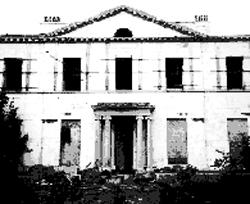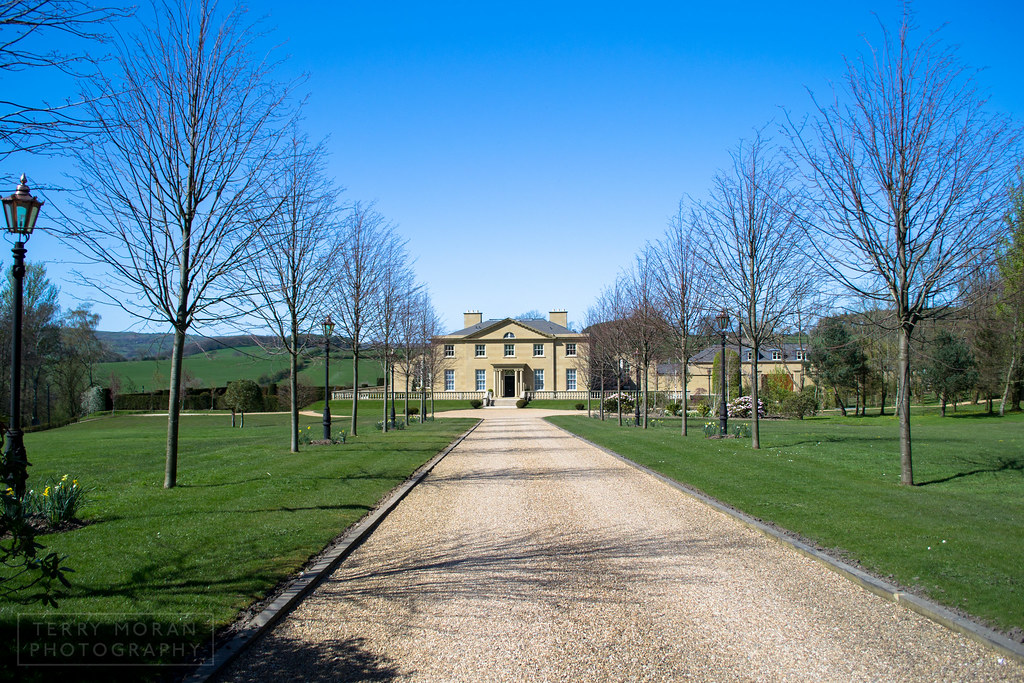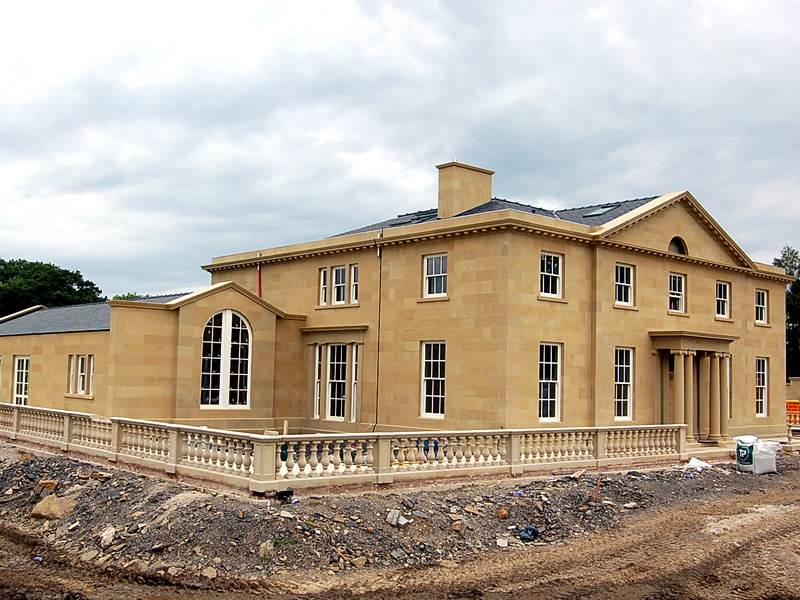

SANDOWN HALL (LODGE) LIVERPOOL

In 1821
the following advertisement of a Sale by Auction appeared in
the Liverpool Mercury:
'On Wednesday 1st August at the
George Inn, Dale Street. The Mansion, Stables, Outbuilding,
Grounds comprising the
Eastern part of the beautiful and
valuable estate in Wavertree called SANDOWN. 19 Statute acres
formerly in occupation
of Mr Willis Earle - Copyhold of
Inheritance. In part separate from the Western part of estate
by sunken fence.
An abundance of healthy young timber
growing.'
It seems likely that Sandown Hall had been
built for this Mr Earle, a coal merchant with a yard in
Stanhope Street,
Liverpool, in about 1810. Another coal
merchant, John Menzies with an office in Old Hall Street, also
lived on the
Sandown estate: an 1815 Property Tax Return for
the Township of Wavertree lists the two men together as 'Earle
Willis & Mr Menzies' (assessment £360). Willis
Earle's elder brother, Richard Willis of Halsnead Park, was the
owner
of coal mines in the Prescot area.
By 1824 the
occupier of Sandown Hall was George Decimus Littledale, the
tenth son of Henry Littledale of Whitehaven.
Born in 1783, he
had married Harriet France of Bostock, Cheshire, in 1822, but
died after only four years of marriage.
It seems as though Hugh
Hornby - the man who was to occupy the house for over 45 years
- bought the house soon after.
Hugh Hornby had been born
in Kirkham, Lancashire, in 1792. His brother Joseph had moved
to Everton in about 1821,
but Hugh travelled extensively in the
countries surrounding the Black Sea. He met and married Louise
Cortazzi, the
daughter of the Venetian consul in Smyrna, and
the couple set up home in Everton. Hugh went into partnership
with his
brother, the firm having its office in Exchange
Buildings, Liverpool, and specialising in trade with Russia.
The
1851 Census recorded Hugh Hornby at Sandown Hall along with his
wife, two sons, two daughters, a governess
and nine servants.
He was a prominent member of the Liverpool Town Council, having
been Mayor in 1838-39 and
later Chairman of the Finance
Committee. In 1866 it was written: 'Whether we hear of him in
committees, see him
in the Council chamber, or elbow him
smoking his fifteenth cigar on the knifeboard of the Wavertree
omnibus, we
find in him a well informed man, an excellent
linguist speaking several languages, an intelligent merchant,
an
able financier, a clear-headed debater, and one well fitted
to lead in that Council chamber which is adorned and
benefited
by his presence'.
Hugh Hornby died in 1875, aged 82.
Sandown Hall was bequeathed to his widow, though his eldest son
Hugh
Frederick lived close by at Sandown Lodge in Olive Lane.
It was HFHornby who became the most celebrated
member of the
family, as a result of his bequest to the City of Liverpool of
the Hornby Art Library in 1899.
Louise Hornby, Hugh's
widow, died in 1881 but Sandown Hall remained the home of the
couple's three surviving
daughters: the two 'Misses Hornby'
(Helen and Mary) and their widowed sister Matilda Madden.
The
three old ladies were a familiar sight in Wavertree until their
deaths in the 1920s; after which the Sandown
Hall estate passed
into the hands of Messrs Crawfords Biscuits for use as the
company's sports and social club.
It was the sale of
part of Crawfords' Playing Fields for housebuilding which
prompted the formation of the
Wavertree Society in 1977.
Unfortunately planning permission had been granted before local
residents became
aware of the sale. Although the campaign to
save the fields was unsuccessful, it led to a closer watch
being
kept on the weekly lists of local planning applications,
which has continued to the present day.

The neglected Hall
Unfortunately
the first permission also set a precedent, and planning
permission was later granted for housing
development on the
remainder of the fields (except for the western portion, owned
by the City Council, which
is now officially designated as
Public Open Space) in spite of the Society's protests.
In
1990 the Hall and grounds were sold - following the closure of
Crawfords' Binns Road factory - to local
businessman George
Downey. He later sold the sports field to Wainhomes, who are
currently building a housing
estate called Sandown Chase. The
hall itself - a Listed Building since 1952, with a particularly
fine interior -
stood empty but subject to a proposed for
conversion to a private nursing home.
I came across something ages ago that
said that the blocks, bricks etc had been stored and sold. The fellow
who
bought them to rebuild stored them in a very damp place and when
he went to rebuild on different land found that
they were unusable. IHe did rebuild but with new materials:

New recreation of Sandown Hall

I've had several trips to Liverpool over
the years, last time the Hornby library was open after its
refurbishment.
A very beautiful room - Jen
The grubby outside of Liverpool town Hall where Hugh was mayor
Entrance to what was the cemetery but now a park. Funeral corteges
would have
gone through here on way to cemetery just below.
Where the family vault would have been in one of these alcoves.